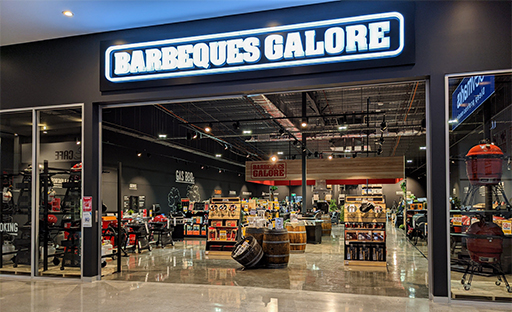Tritium
“Salesforce is not just a CRM anymore, but a platform we can use to evolve our business. If I can think of something we should do, I can use Salesforce to build it. That’s the power it provides.”


50%
Increase in Sales conversion and SLA attainment
Tritium gains a 360 degree view of customers and advances mission for a cleaner world
With a 20-year history of innovation in electro mobility and renewable energy solutions, Queensland-based Tritium works with customers around the globe to facilitate the transition to electric-powered vehicles. The company is known for its Direct Current (DC) fast charge solutions which can add as much as 350 kilometres to the range of an electronic vehicle in just ten minutes. These solutions — when rolled out widely — will empower electric vehicle owners to drive as far as they want, whenever they want, and enjoy unprecedented freedom in how they manage their energy needs.
"We want to help create cleaner, healthier and more convenient cities by reducing reliance on fossil fuels and powering electric vehicles,” said Seshan Weeratunga, Chief Digital and Experience Officer at Tritium. “Salesforce gives us a 360 degree view of our customers so that we can keep them at the centre of our business even as we grow at a rapid pace.”
Increasing insight on customer needs
Tritium’s business has evolved from its innovation in solar car racing back in 1999 and as interest in electric vehicles has accelerated, so has Tritium’s growth. It opened its doors in the US in 2017 and expanded to Europe in 2018 and now works with utilities, transport, infrastructure, government and retail customers in more than 30 countries. These customers use Tritium’s chargers to power their own vehicle fleets and to provide charging infrastructure to consumers.
Some of the challenges for Tritium as it grew, were having a complete view of customers and their charging networks and being able to service these in a streamlined way. These challenges were compounded by disparate systems and the use of spreadsheets to keep track of sales and customer data.
“Up until the end of 2017, we were operating without a CRM or any formal sales processes. We also had a ticketing system for support which was overly complex and worked better for engineering than it did for managing customer service,” explained Weeratunga. “All of this resulted in a fragmented view of the customer and made it difficult to provide them with a consistent experience. For example, we had instances where sales reps would be meeting with customers and unaware of issues impacting the health of their network.”
Tritium decided to implement Salesforce to manage sales and service, allowing it to have a unified view of the customer across the business. This has given the sales team a central place to manage leads and opportunities and provided them with data at their fingertips to help them understand and deliver on customer needs. In addition, the sales team can now see the status of any support cases customers have open and are better equipped to discuss these than they were in the past.
“Salesforce has revolutionised how we manage sales and given us real-time visibility of our pipeline and how each deal is tracking,” said Weeratunga. “It’s also enabled us to finally get an accurate forecast which we can use to predict and manage production capacity.”
Powering seamless service around the world
To provide consumers with true energy freedom and support the adoption of electric vehicles, Tritium is working with customers to make chargers available in more locations. At the same time, the company has been increasing its capacity to support this growth. It has established support teams in the US, Europe and Australia and, using Service Cloud, the teams work together to provide 24/7 phone, chat and email support to customers all over the globe. This has helped to streamline workflow and allows teams to manage higher volumes of information so they can efficiently attend to customers’ needs. Also, using Salesforce, Tritium is now able to start measuring service performance and driving improvements.
Using Service Cloud and a new Customer Community, Tritium has also introduced self-service. Customers can use the portal to log support cases or find answers to frequently asked questions in Tritium’s knowledge base. They can also monitor the performance of their charging network. The performance data comes from Tritium’s IoT platform which is integrated with Salesforce through an API.
“We now have complete visibility into support cases and the health of our customers’ networks, and by using Salesforce, we can share that information with our customers to provide a better experience,” said Weeratunga.
To further streamline service and improve collaboration with partners, Tritium has introduced two Partner Communities. The first community is used to manage field service requests and provides partners with customer and technical information to help them do their jobs. The community also has live chat and video calling embedded so that partners can quickly contact Tritium’s engineers for help. Partners are able to update the status of jobs as they progress and both Tritium and its customers can see the updates in real-time.
Tritium’s second Partner Community is for partners who resell its chargers to customers like fuel stations. The community provides these partners with information to support sales and marketing, including datasheets.
“Our Partner Communities have streamlined collaboration with partners and also improved accountability. We can see when partners are working on a case and also see when that case is closed. It helps us manage the experience for our customers from end-to-end and makes communication more efficient,” said Weeratunga.
Leveraging social media and AI for more proactive service
Always seeking new ways to improve service, Tritium has started to use Social Studio to monitor mentions about its chargers online. This is one of the first places consumers go to when they encounter a broken charger and so by using Social Studio, Tritium can find out about issues and start resolving them even before they’re raised by customers through traditional channels.
Next, Tritium plans to use Heroku to connect Service Cloud to its data lake on AWS so that it can gather even more insight on the performance of its chargers. This will pave the way for the use of AI to identify performance issues in near real-time and help Tritium optimise uptime.
“Salesforce is not just a CRM anymore, but a platform we can use to evolve our business. If I can think of something we should do, I can use Salesforce to build it. That’s the power it provides,” said Weeratunga.
Keep exploring stories like this one.
Questions? We’ll put you on the right path.
Ask about Salesforce products, pricing, implementation, or anything else — our highly trained reps are standing by, ready to help.






